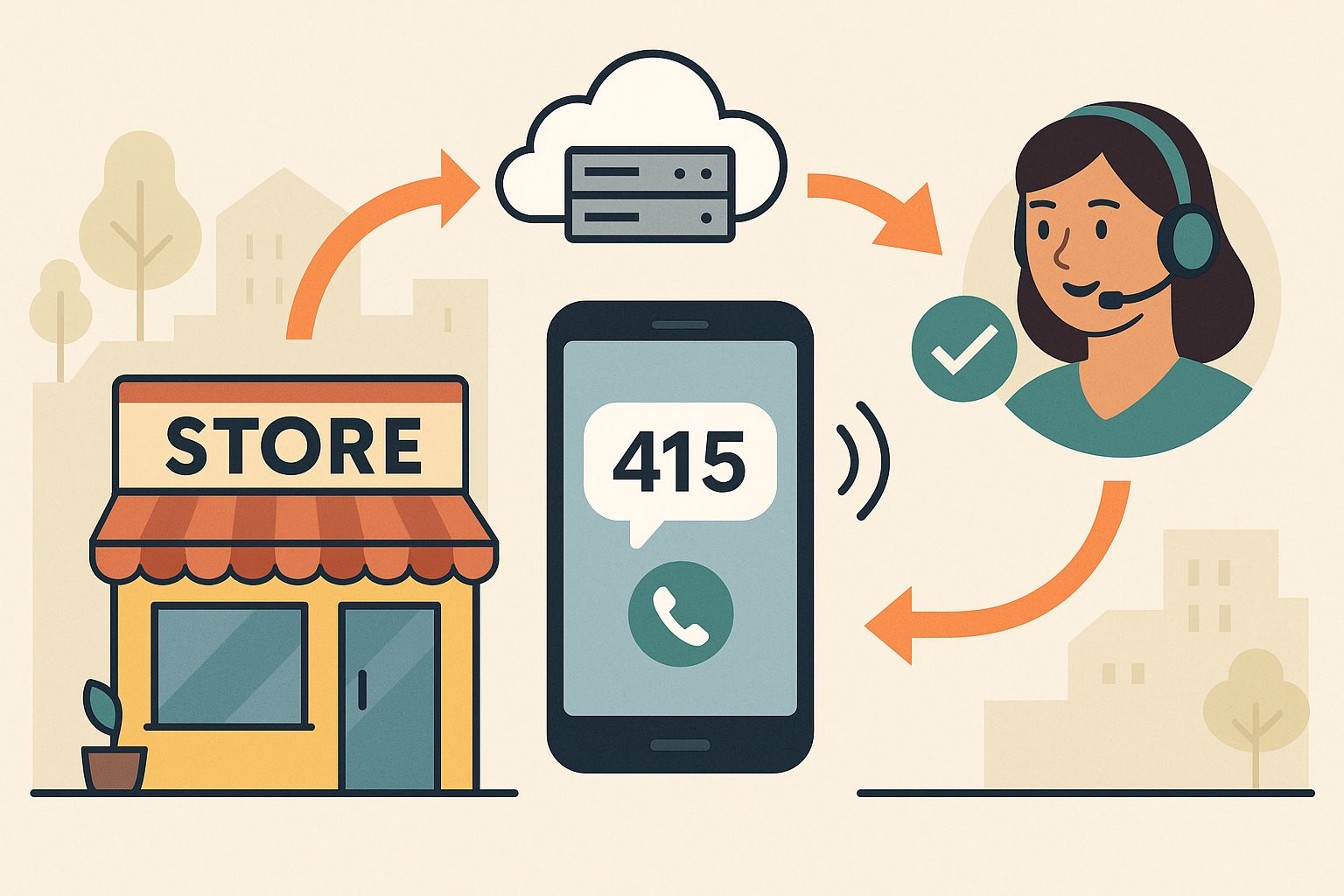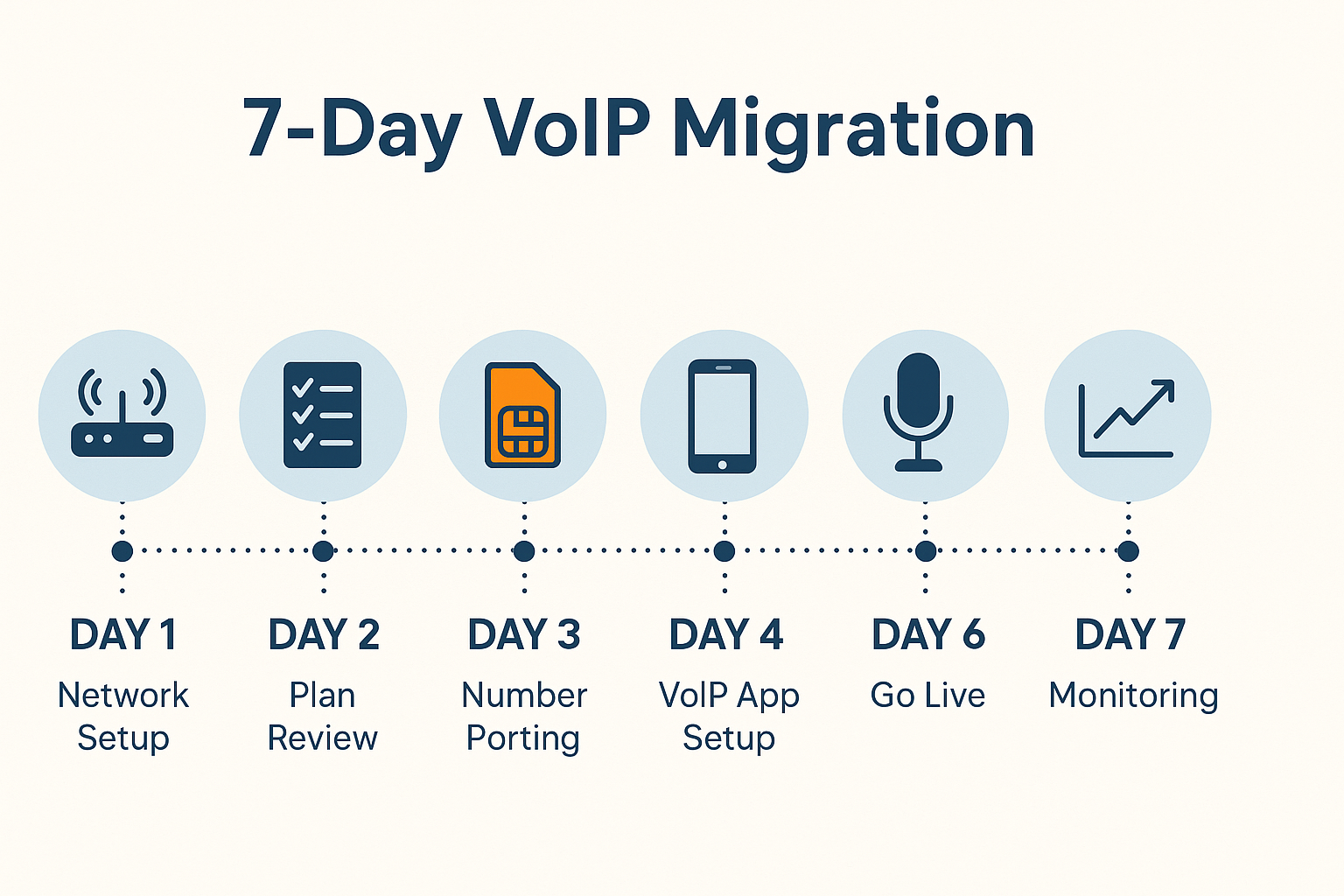Your landline keeps you tethered to the front desk and hits you with surprise fees every month. Yet the moment you Google “phones for small business,” you drown in jargon and hard-sell ads. I’ve migrated nine retail and services firms, including my own two-store café chain, onto internet calling in the past three years. Below is the pragmatic, no-fluff playbook I wish someone had handed me before my first port-over.
The “local” edge that still matters in an internet world
Calling over IP travels the globe in milliseconds, so why care about area codes? Three reasons:
1. Caller ID trust – Customers pick up familiar numbers 47 % more often than toll-free or out-of-state prefixes, according to Tech.co’s 2025 phone-habits report.
2. Reduced latency – The closer your SIP gateway is to the customer, the lower the round-trip delay. Anything under 50 ms feels instant; above 150 ms starts the dreaded talk-over. A Montreal-based clinic we migrated to last June saw average latency drop from 110 ms to 42 ms after shifting to a data-center 20 km away. Network-monitoring tests back up that sub-50 ms sweet spot.
3. E911 accuracy – FCC rules tie your outbound line to a civic address so first responders know where to go. Local registration keeps you on the right PSAP (Public Safety Answering Point).

The money math: real savings, hidden fees, and my litmus tests
- Up-front gear – Skip desk phones unless you truly need tactile keys. A decent Yealink handset is ₹6,000 ($75), but a softphone app is free.
- Monthly spend – Independent benchmarks place per-user pricing between $20–$50. Managed-IT consultants I work with average ₹1,500 per seat after volume discounts.
- Documented savings – PCWorld profiled a Bay-Area distributor that dropped $1,200 a month after ditching PBX hardware, roughly a 60 % cut.
- Taxes & surcharges – Watch for “regulatory recovery” fees; they can add 15 % if you’re not careful.
- Bandwidth check – One G.711 call uses about 85 kbps in each direction. Ten concurrent calls need less than 2 Mbps, trivial on fibre but lethal on a 4G hotspot.
Simple cost calculation
1. Seats × plan price = baseline.
2. Add a 20 % buffer for usage-based minutes and fees.
3. Subtract legacy line rental and PBX maintenance; that’s your true delta.
Must-have features (skip the buzzwords, focus on ROI)
| Need | Why it matters | Keyword naturally addressed |
|---|---|---|
| Number porting in <24 h | Avoid downtime and marketing collateral reprint | small business phone systems voip |
| Mobile softphone + SMS | Staff answer on the road; no more call-forward fees | voip phone system for small business |
| Auto-attendant & IVR | Routes calls without hiring extra reception | voip phone |
| Call recording with AI transcription | Search conversations, speed QA audits | top 10 voip providers (used later in examples) |
| SD-WAN or LTE failover | Keeps phones alive during ISP hiccups | voip service cheap (context: avoid costly outages) |
Picking the right provider tier
I group vendors into three buckets. The names below are examples; compare peers rather than chase logos.
1. Bare-bones budget – Minimalist plans at $15-$20, usually BYOD only. Great for five-seat teams that just need voice.
2. SMB all-rounders – $25-$35 with video, CRM pop-ups, and mobile apps. Think of companies often ranking in “top 10 VoIP providers” lists from TechRadar or G2.
3. AI-powered suites – $40+ with live transcription, sentiment, and auto-coaching. Worth it if every call is revenue bearing (e.g., sales floor, legal consults).
Evaluation checklist
- Local PoPs or edge nodes within 100 km
- SLA ≥ 99.99 % uptime
- Porting support staff who answer within 4 hours (test this with a pre-sale ticket)
- Contract exit fees (none is ideal watch the fine print)
7 day rollout timeline

| Day | Task | Insider tip |
|---|---|---|
| 1 | Confirm internet stability & QoS settings | Prioritise SIP and RTP ports; most routers have an “IP voice” preset |
| 2 | Export customer contact list & prep auto-attendant script | Keep the menu ≤ 4 options TechRepublic’s IVR best-practice rule. |
| 3 | Submit port-in request with recent phone bill | FCC rules guarantee you can keep numbers when switching. |
| 4 | Configure softphone apps & test on LTE | Ensures staff can answer if the office line drops |
| 5 | Record greetings, enable call recording policy | Inform callers to stay compliant in two-party consent states |
| 6 | Go-live during a low-call window (e.g., 6 a.m.) | Forward legacy number to temporary DID in case porting lags |
| 7 | Review call logs, fine-tune ring groups, train staff on voicemail-to-email | Celebrate: you’re officially cloud-based |
Compliance Corner, you can’t skip
- 911 & E911 – Provide a physical service address for every VoIP endpoint. The FCC’s 2024 Next-Gen-911 order makes this mandatory for IP services.
- Local Number Portability – Carriers must transfer your number in as little as two and a half hours for wireless; wired lines can take a day. Have an authorised signer on standby.
- Call recording laws – One-party consent in most U.S. states; two-party in CA, FL, IL, MD, MA, PA. Add a pre-call beep or greeting just to be safe.
- Data retention – Store call recordings for at least 90 days to dispute chargebacks or service claims.
Decision matrix
| If you… | Choose… |
|---|---|
| Run <10 simultaneous calls, budget is king | Bare-bones plan + mobile apps |
| Need CRM screen-pops & SMS | SMB all-rounder |
| Sell high-ticket items over the phone | AI-powered suite with sentiment analysis |
| Have patchy ISP service | Provider offering built-in LTE failover |
| Expect to double headcount this year | Contract-free month-to-month plan |
Final word & next step
Switching to internet calling isn’t just shaving a few rupees off the bill. It’s the difference between customers hearing perpetual busy tones or a polished virtual receptionist that routes them in seconds.
If you’d like to hear what that sounds like, click below and let a SuperU voice agent answer your most common customer questions live no sales pitch, just pure demo value.
Start for Free – Create Your First Voice Agent in Minutes


